Welcome to Rapa Nui
To ensure you’re prepared to begin your journey and don’t encounter any unexpected surprises that could dampen your experience with us, please follow the following recommendations:
Documentation for traveling to Rapa Nui
It’s important that you have certain documents, which you must present at the airport on the day of your flight to Rapa Nui:
- Identification card, passport, or any other official travel document.
- Return ticket from Rapa Nui to Santiago; which must indicate the return date not exceeding 30 days from the departure date.
- Accommodation reservation, duly authorized by Sernatur, which must indicate the address of the place or, alternatively, you can present an invitation letter from a person belonging to the Rapanui community or another authorized person, in accordance with Article No. 6 of Law 21.070.
- Single Entry Form (FUI), which you must complete at least 48 hours before traveling. After completing it, you will receive a confirmation email that you must present to the PDI (Investigative Police) at the airport. It’s important to emphasize that if you do not complete it, you will not be able to board. To complete your form, go to the following link: https://ingresorapanui.interior.gob.cl/
Requirements for Visiting Rapa Nui National Park
You should plan your visit to Rapa Nui in advance. Once you have purchased your plane ticket, we recommend the following:
- Purchase your entrance ticket to the National Park here, which will allow you to visit the designated tourist sites.
- Download your National Park entrance ticket and Visitor’s Guide onto your device. In the guide, you will find the park regulations and all the information you need to know before starting your visit.
- Contact and hire a guide. Guides can be accredited by the Maꞌu Henua Indigenous Community through this link. Alternatively, you can also contact one of the tourism agencies by visiting their contact pages.
Regulations within Rapa Nui National Park
The regulations of Rapa Nui National Park, supported by Law 17.288 of National Monuments, are essential for the preservation and respect of this unique heritage. Here are the details:


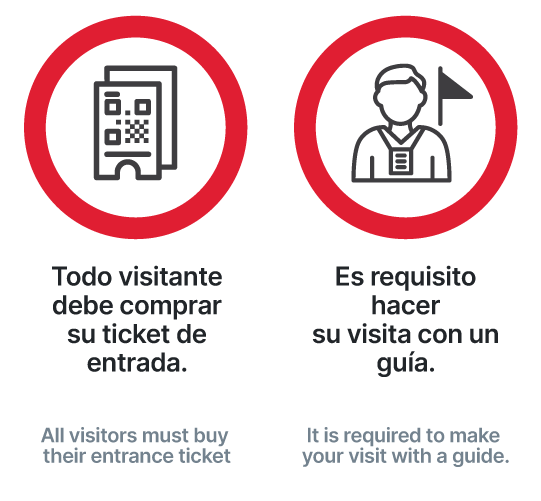
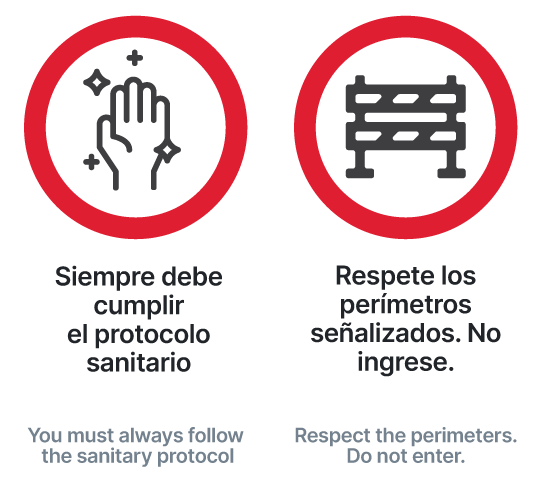
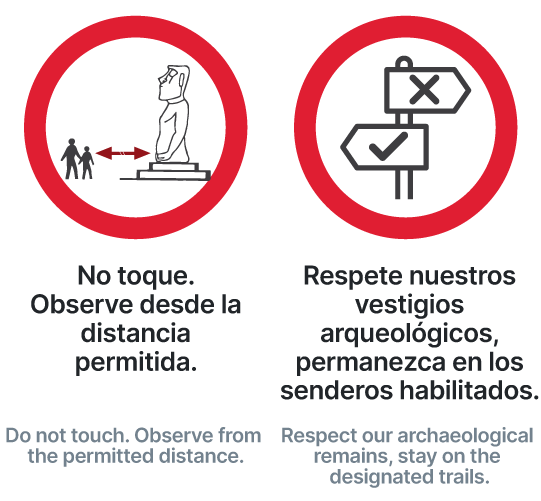

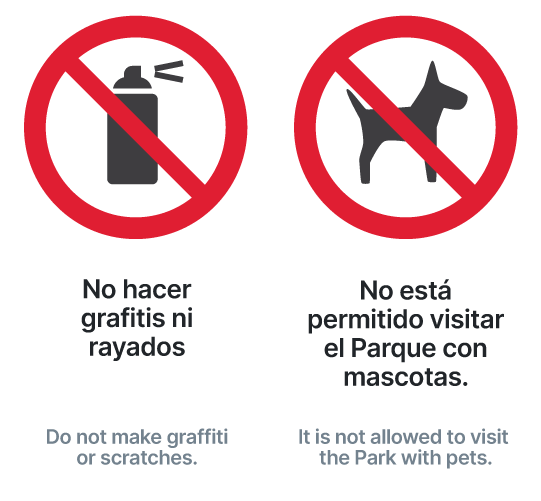
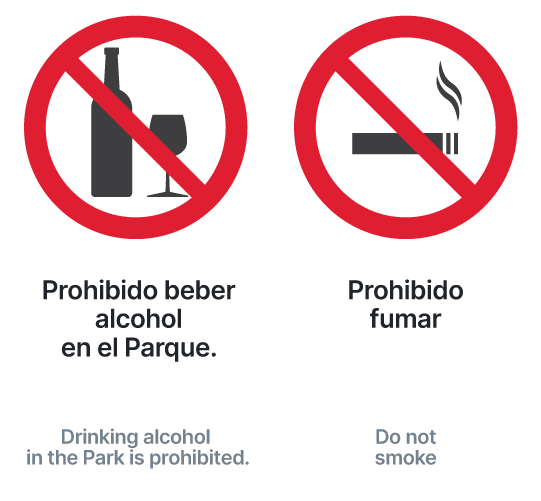
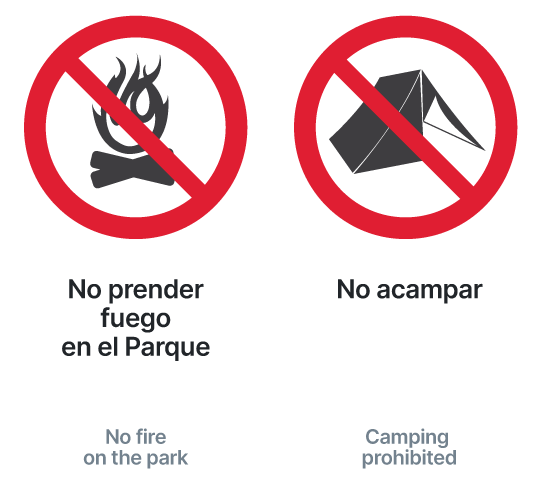
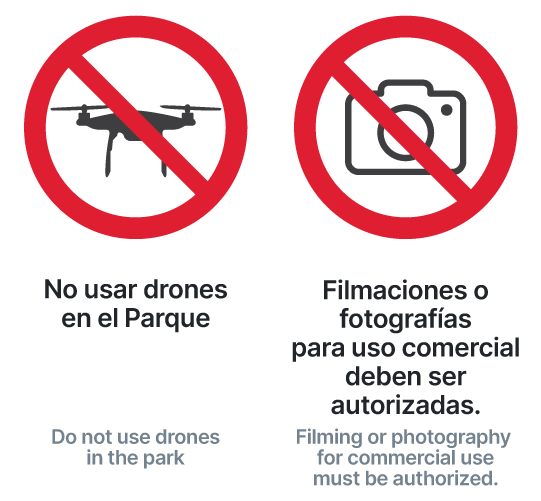
General Tips for Visiting Rapa Nui
Welcome to Rapa Nui! Here, you’ll enjoy a subtropical oceanic climate throughout the year, with pleasant temperatures ranging between 18°C and 24°C (64°F – 75°F). The bathing season on its beaches is continuous from January to December, as the water temperature remains always above 20°C (68°F), providing ideal conditions for comfortable swimming.
It’s recommended to wear lightweight and comfortable clothing, such as t-shirts and shorts or dresses, accompanied by a light jacket for cool evenings due to the wind and a waterproof jacket for rainy moments. Don’t forget to include a hat, sunglasses, and sunscreen in your luggage to protect yourself from the intense sun, especially during the summer season from December to March. To explore archaeological sites and trails, it’s advisable to wear comfortable walking shoes. With these simple precautions, you’ll be ready to immerse yourself in the fascinating experience offered by this mysterious island in the Pacific. We hope your visit is unforgettable!
Currency and Finances
The official currency in Rapa Nui is the Chilean Peso (CLP). Most establishments accept debit and credit cards, facilitating your transactions. Additionally, in some places such as hotels and select shops, it’s possible to make payments in US dollars and euros. For added convenience, there are two banks on the island with ATMs available.
Time Zone
It’s important to take into account the time difference with Santiago de Chile while enjoying your visit. Rapa Nui is in the Pacific Islands Time Zone (UTC-6), which means it is two hours behind the Santiago de Chile time zone. So, adjust your watches and make the most of your time in this paradise full of history and natural beauty!
Language and Culture
In this fascinating destination, the primary language is Rapanui, a unique Polynesian language that reflects the rich cultural heritage of the island. Although Spanish is widely spoken, immersing yourself in some Rapanui words and expressions can further enrich your experience. Here’s a list of words you can learn before embarking on your journey:
| Hola / buenos días / adiós | ꞌIorana | Hello / good morning / bye |
| Gracias | Māuru-uru | Thanks |
| De nada | O te aha nō | You’re welcome |
| Cuídate | Hāpaꞌo koe | Take care |
| Que te vaya bien | Ka oho riva-riva | I wish you well |
Local Transportation
To fully enjoy this wonderful island, you have various transportation options available. You can choose to rent private vehicles through local companies, providing you with the flexibility to explore at your own pace. If you prefer a more relaxed experience, taxis are an excellent option for comfortable travel and reaching specific destinations without much effort. For those who wish to immerse themselves in the beauty of Rapa Nui actively, cycling is an ecological and fun alternative, always respecting the roads and staying on designated paths. Choose the means of transportation that best suits your style and uncover the secrets that this unique island has to offer!
Food and Water
In this magical island, freshwater mainly comes from wells and natural springs, being a precious resource. We recommend using it consciously, thus contributing to the environmental sustainability of this paradise in the middle of the Pacific.
Regarding food, don’t miss the opportunity to taste the delicious local cuisine. With Polynesian influences, you’ll enjoy unique dishes such as fresh local fish ceviche, curanto (a traditional cooking method in an underground pit), poꞌe (a dessert made from sweet potato or banana), and typical tuna empanadas. You’ll also find international options, but don’t miss experiencing the authenticity of Rapanui flavors.
Additionally, indulge in the freshness and sweetness of the fruits that this paradisiacal island has to offer, such as pineapple, mango, guava, and papaya. These natural gems are not only delicious but also refreshing and perfect for recharging energy while exploring the different activities during your stay. Bon appétit and enjoy your culinary experience to the fullest on this wonderful island!!
Plug Adapters
To ensure a smooth stay, it’s essential to consider differences in the electrical system. The island uses plug types C and L, with a frequency of 50 Hz and a voltage of 220 V. Remember to bring universal plug adapters to ensure proper connection for your electronic devices. Prepare to capture the magical moments of Rapa Nui without electrical worries and enjoy your trip to the fullest!
Regulations and Responsible Exploration:
As you immerse yourself in the wonderful experience that this island offers, we remind you of the importance of responsible exploration. Respect local regulations to preserve the cultural and natural heritage of Rapa Nui. Avoid touching or climbing on the moai, stay on designated trails, and refrain from collecting native species (sand, stones, shells, or corals, etc). Additionally, contribute to environmental care by minimizing your environmental impact and using services sustainably.
Together, we can ensure that future generations enjoy the unique beauty of this island. Explore with respect and make your visit to Rapa Nui a memorable and responsible experience!
Maps and Navigation
To make the most of your adventure on this island full of mysteries, we recommend using local maps and navigation resources. Although the island is not extensive, having a good map will allow you to confidently explore the various archaeological sites and stunning landscapes. Numerous points of interest are signposted, but a detailed map will facilitate navigation and ensure a more enriching experience.
Feel free to visit our “visitor map” section, and if you have any questions, we invite you to contact us through our contact form or via WhatsApp, and we will be happy to assist you.
Internet Connection and Phone Signal
During your stay on this fascinating island, it’s important to note that internet connection and phone signal may be limited in some areas. Although many tourist spots and accommodations offer Wi-Fi access, the speed may vary.
Remember to download maps and any essential information in advance to ensure smooth navigation (such as the Rapa Nui National Park entry ticket if you purchased it online). Regarding phone signal, some areas may have intermittent coverage, with ENTEL being the main telecommunications company. Prepare to disconnect and immerse yourself in the magic of Rapa Nui, but also take the opportunity to enjoy connecting with nature and local culture. You’ll explore a unique island, connecting in ways that go beyond the digital realm!
Preguntas Frecuentes
How can I obtain the entrance ticket to Rapa Nui National Park?
You can obtain the entrance ticket through our website by clicking here or at our ticket office once you arrive in Rapa Nui, located in the center of Haŋa Roa.
Is it mandatory to have a guide to visit Rapa Nui National Park?
Yes, starting from 2023, it became a mandatory requirement.
What is Rapa Nui National Park and what are its tourist visiting sites?
It is a protected wilderness area located in the territory of Rapa Nui, constituting 43% of its territory, being a large archaeological reserve and a UNESCO World Heritage Site. It has 12 visiting sites: Tahai, ꞌŌroŋo, Vinapū, Vaihū, Akahaŋa, Rano Raraku, Ahu Toŋariki, Te Pito Kura, Haŋa Rau (Anakena), Ahu Akivi, Puna Pau, and Ana Te Pahu.
How many sites can I enter with this ticket?
You can enter all 12 enabled visiting sites, more than once (always accompanied by a guide or host), except for Oroŋo and Rano Raraku, sites of greater fragility in the park, which can only be visited ONCE.
What documents do I need to have on hand to enter the sites of Rapa Nui National Park?
You must have your park entrance ticket, which is personal and non-transferable, and present your personal identification (ID card or passport).
How long is the validity of the entrance ticket to Rapa Nui National Park?
The ticket is valid for 10 days. If you purchase it online, it will count from the entered date, and if you purchase it at our ticket office once you arrive in Rapa Nui, it will count from the first entry to the national park.
How many times can I enter Rapa Nui National Park?
You can only enter once (1) at ꞌŌroŋo and Rano Raraku, as they are the most fragile sites of the national park. For the rest, you can enter the remaining 11 enabled sites more than once (each time accompanied by a guide or host, as it is a mandatory requirement).
What are the Muto’i?
They are workers belonging to the Maꞌu Henua Indigenous Community, responsible for ensuring the safety of visitors, preserving cultural heritage at tourist sites, and providing valuable information to visitors.
Does the national park have restroom facilities?
The park has 3 restroom facilities located at the sites of: ꞌŌroŋo, Rano Raraku, and Haŋa Rau (Anakena). Please consider them when planning your tour.
How can I find an accredited guide?
On our website, you can find a comprehensive list of accredited guides, their information, and personal contacts.
What are the opening hours of Rapa Nui National Park?
The park operates on a summer schedule from 09:00 a.m. to 8:00 p.m. (December to March) and a winter schedule from 09:00 a.m. to 6:00 p.m. (April to November), Monday to Sunday.
How can I contact a certified guide?
These recommended guides have certification and first aid courses. In our guides section, you can obtain more information and directly contact any of them to hire their services. You can also filter the information according to the language you want them to speak.
Whom should I approach if I have doubts?
If you are in Haŋa Roa and have questions, visit our information office at Kiri Reva s/n (behind the craft market). If you are in the national park, consult with a Mutoꞌi from the Maꞌu Henua Indigenous Community, the local authority, for information, instructions, and recommendations. Do not hesitate to request their assistance as needed.